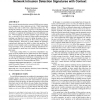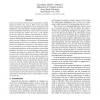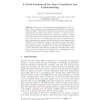1875 search results - page 305 / 375 » Modeling the Security of Steganographic Systems |
CCS
2003
ACM
14 years 3 months ago
2003
ACM
Many network intrusion detection systems (NIDS) use byte sequences as signatures to detect malicious activity. While being highly efficient, they tend to suffer from a high false...
CTRSA
2003
Springer
14 years 3 months ago
2003
Springer
Exposure of secret keys seems to be inevitable, and may in practice represent the most likely point of failure in a cryptographic system. Recently, the notion of intrusion-resilien...
ACSAC
2010
IEEE
13 years 8 months ago
2010
IEEE
The JavaScript language is a core component of active and dynamic web content in the Internet today. Besides its great success in enhancing web applications, however, JavaScript p...
ACSAC
2004
IEEE
14 years 1 months ago
2004
IEEE
Large-scale attacks generated by fast-spreading or stealthy malicious mobile code, such as flash worms and e-mail viruses, demand new approaches to patch management and disinfecti...
ACNS
2004
Springer
14 years 3 months ago
2004
Springer
Abstract. We propose a novel framework named Hidden Colored PetriNet for Alert Correlation and Understanding (HCPN-ACU) in intrusion detection system. This model is based upon the ...



